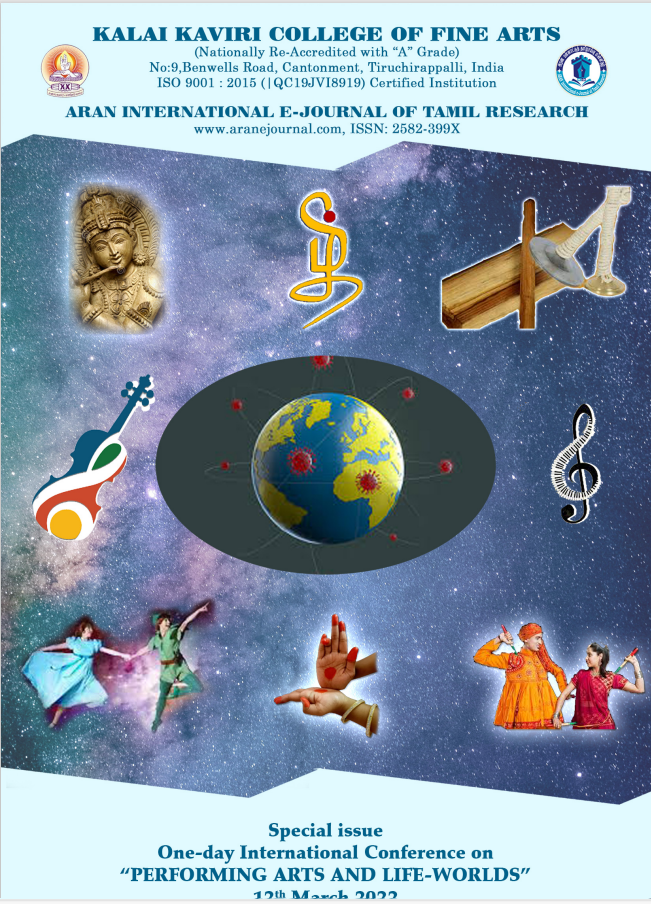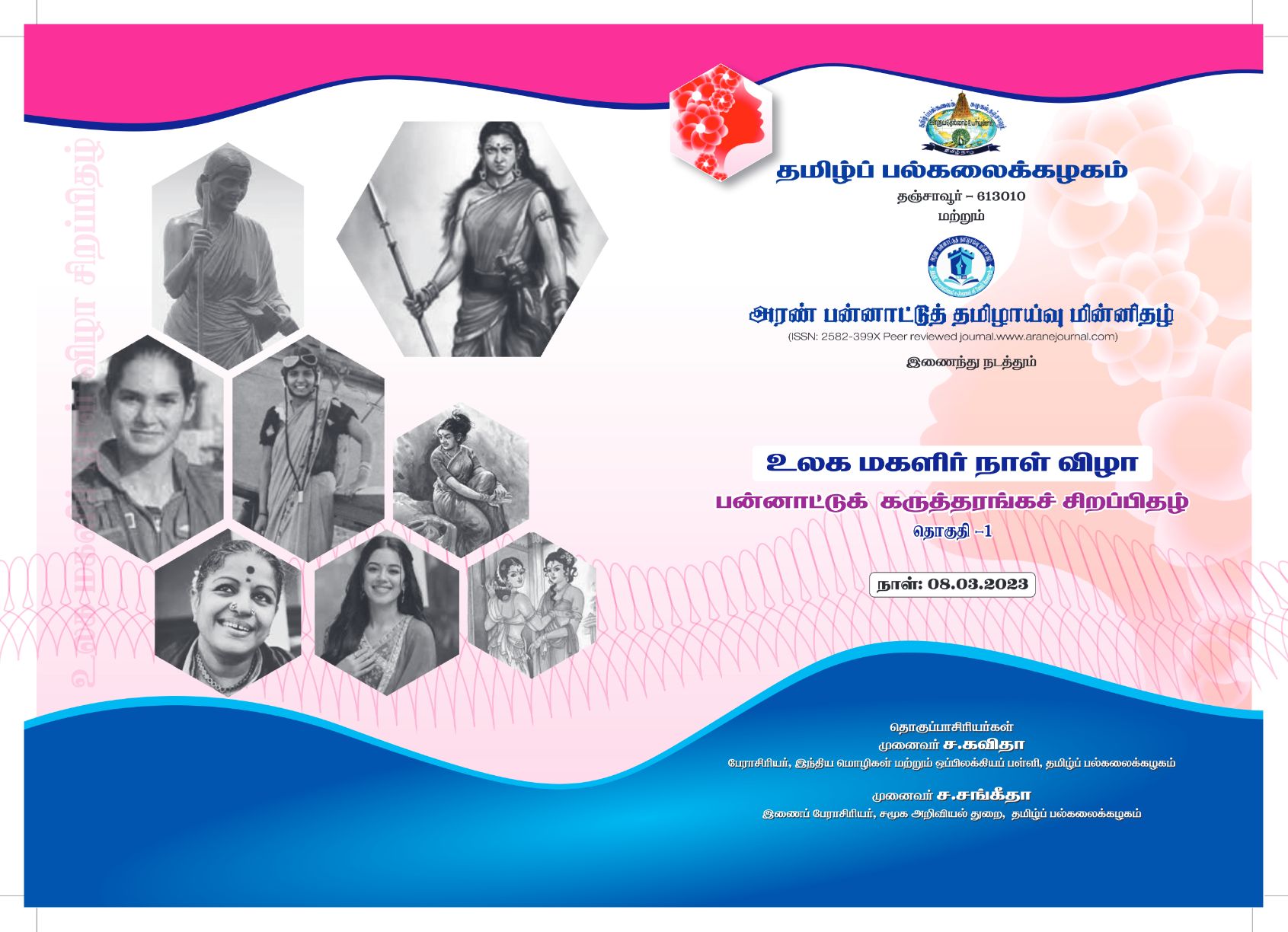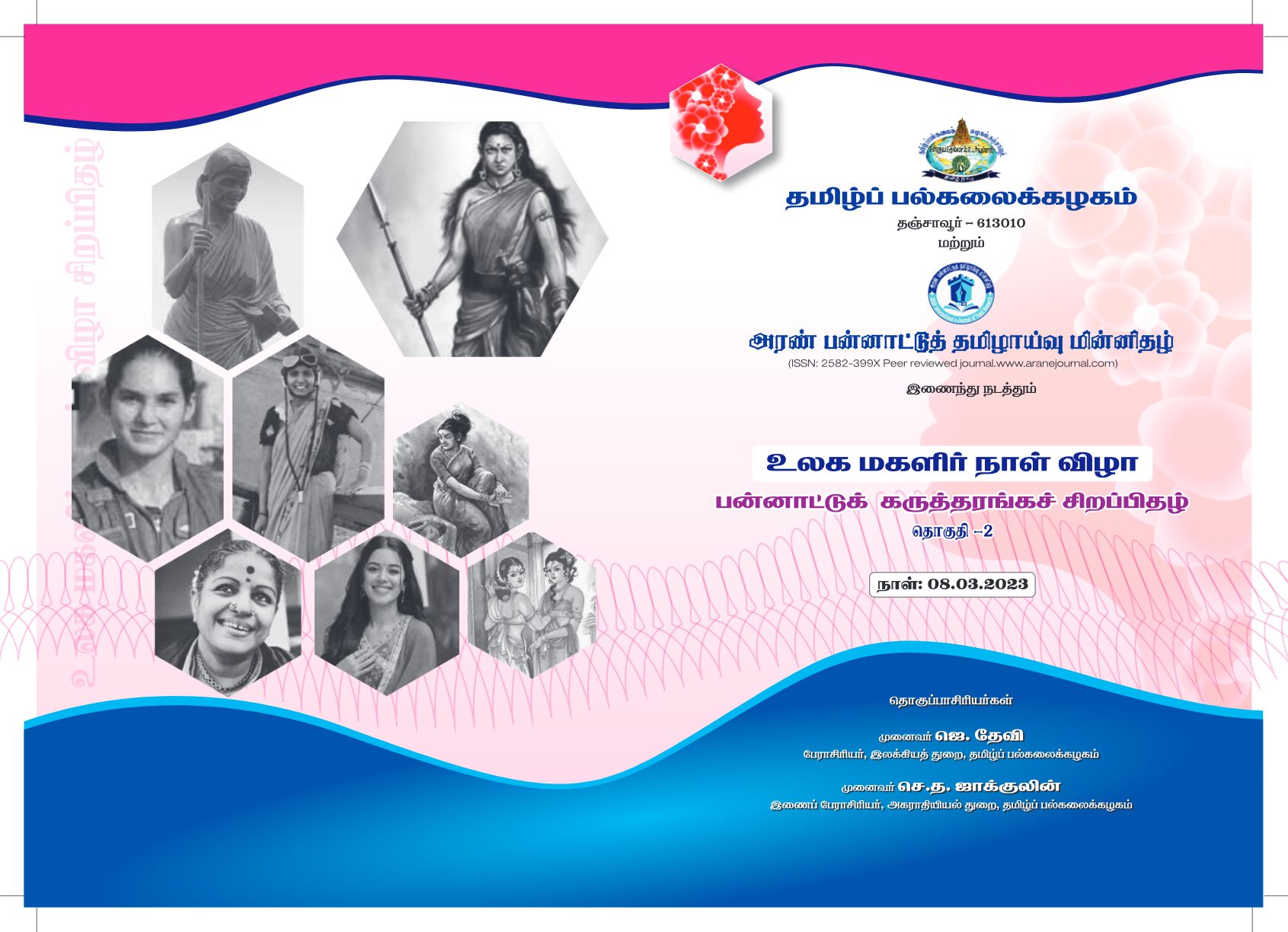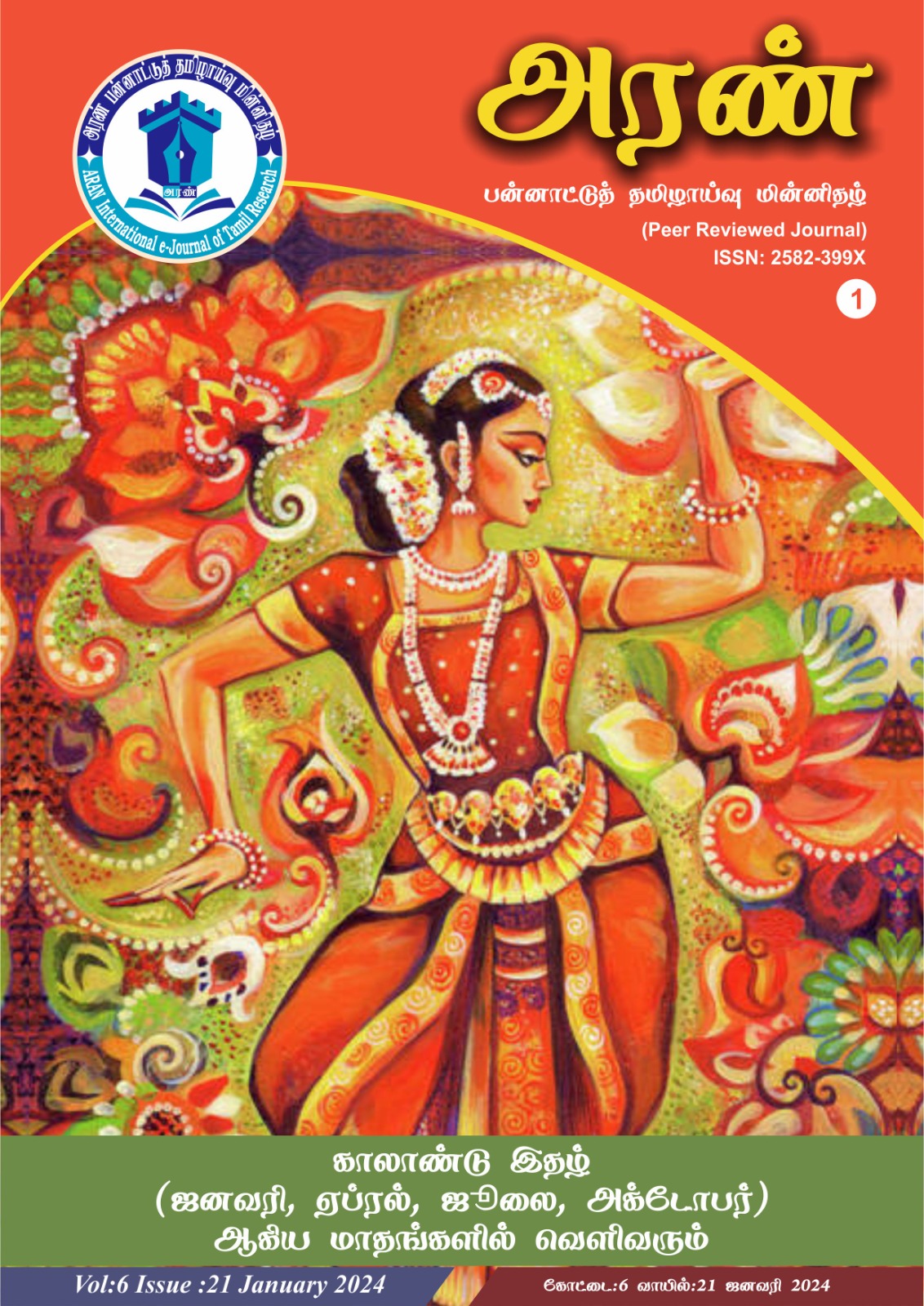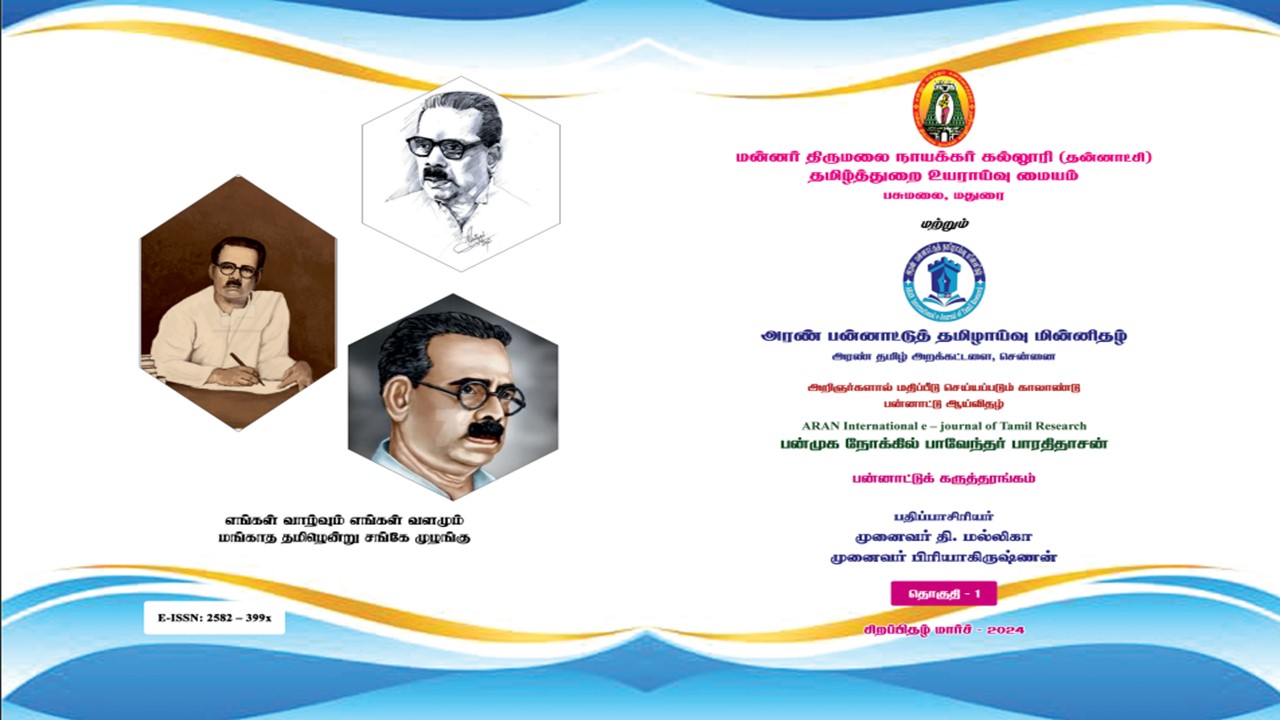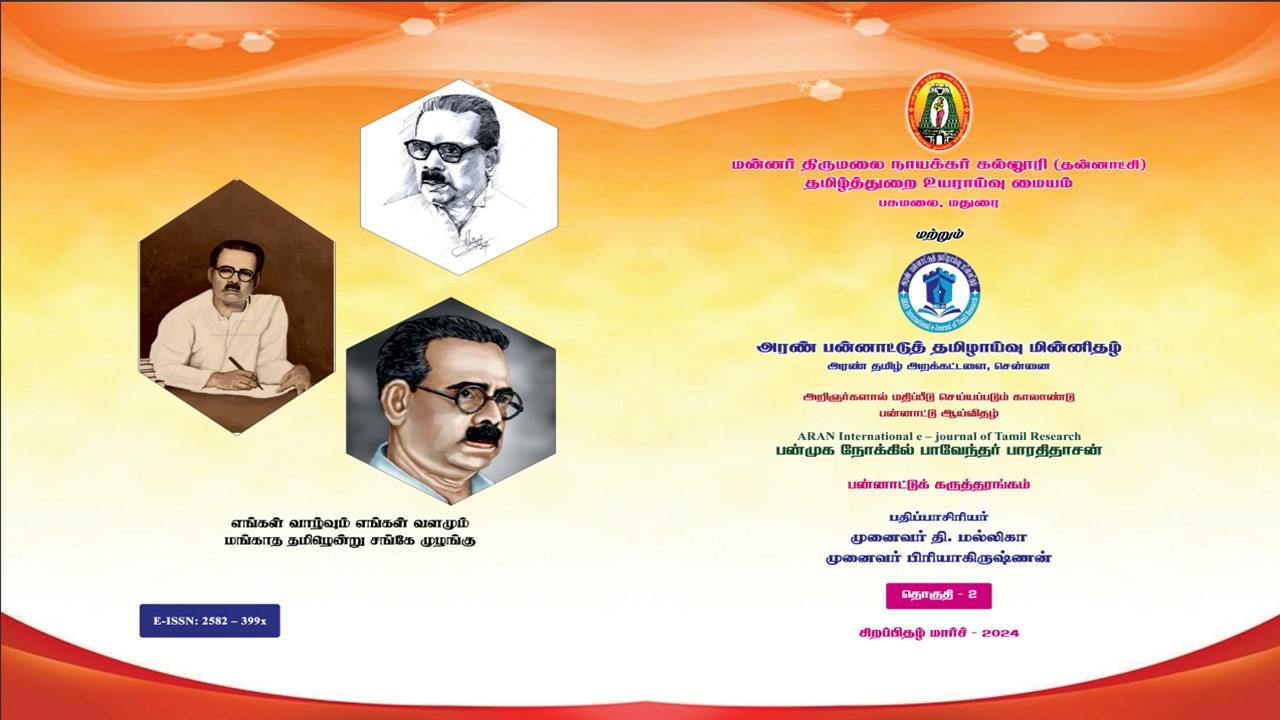Exploration of French Colonial Era Paintings in the Puducherry Government Museum.
Abstract
This study explores the influence of French colonial-era multifaceted paintings on Puducherry's artistic landscape, focusing on the collection at the Puducherry Government Museum (Figure 1). It examines how French artistic traditions merged with local Indian styles, creating a unique cultural fusion. Through an analysis of themes, styles, and techniques, the research highlights the historical, social, and cultural exchanges between France and India, contributing to a deeper understanding of Puducherry's artistic heritage within the broader narrative of colonial art in India.
1. Introduction
Puducherry, with its rich cultural diversity, has been shaped by a blend of influences, from Tamil origins to French colonial rule. This research delves into the historical context that influenced the paintings created during the French colonial era in the 17th to mid-20th century. By examining painting styles, techniques, and methods, the study reveals the creative processes and cultural interactions that contributed to the region's artistic development.
Three primary types of paintings are explored: Western-style paintings, Indian paintings influenced by Western art, and traditional Indian paintings. The French colonial period brought Western painting styles to Puducherry, with French and local artists blending these with indigenous themes, enriching the cultural landscape.
2. Purpose of the Study
The study aims to investigate the influence of French colonial-era paintings on Puducherry’s artistic landscape. By examining these artworks, it uncovers how French artistic traditions merged with local Indian styles, resulting in a distinctive cultural fusion. This research highlights the broader historical, social, and cultural exchanges between France and India, ultimately contributing to a deeper appreciation of Puducherry's artistic heritage.
3. Significance of the Research Study
This research provides key insights into the fusion of French artistic styles and local themes in Puducherry's colonial-era art. By examining the museum’s collection, the study reveals how French movements like Impressionism, Realism, and Romanticism were adapted to reflect local culture. It highlights the critical role of the Puducherry Government Museum in preserving this unique artistic heritage and ensuring that the impact of French colonial art continues to be recognized and valued.
4. Review of Literature
The literature review includes works by Stranahan, Pierre, Stephan, Labernadie, Antony, and Babu. These sources collectively highlight Puducherry's art and culture shaped by centuries of indigenous traditions and colonial influences, focusing on the evolution of artistic styles, techniques, and cultural exchanges during the French colonial period.
5. Methodology
This study uses a multi-step approach including a literature review, archival research, and art historical analysis of selected paintings. It documents artworks in the Puducherry Government Museum, gathers expert insights through interviews, and performs thematic analysis to understand the cultural and historical significance of French colonial art in Puducherry.
6. Historical Evolution of the Puducherry Government Museum
The Puducherry Government Museum was established in the 1940s by Indologist G. Jouveau Dubreuil and opened on April 1, 1943, displaying European paintings and marble statues. Post-World War II, the museum faced neglect, with artifacts being relocated and art focus diminishing. Following India's independence, efforts led by Chief Minister M.O.H. Farook revitalized the museum, expanding its collection and establishing an Art Purchase Committee in 1981.
French art student Madame Gable further enhanced the collection in 1981, and the museum evolved into a multipurpose institution with new sections added. In 1983, it was inaugurated by President Giani Zail Singh. In 1998, the museum relocated to a restored building in the French Quarter, solidifying its role as a key cultural landmark in Puducherry.
7. Exploring the Puducherry Government Museum's Collections
The Puducherry Government Museum features over 6,500 exhibits spanning prehistoric times to the colonial era. The museum serves as a center for exploring the region's history, showcasing artifacts like bronze statues, stone sculptures, paintings, textiles, and more. The exhibits narrate Puducherry's archaeological heritage and its time under French rule, providing a comprehensive view of the region's past⁸.
7.1 A Glimpse of the Puducherry Government Museum Art Gallery
The Art Gallery within the museum highlights the local culture through a diverse collection of paintings. These artworks, representing various styles, themes, and historical periods, reflect the artistic expression of Puducherry and its surroundings. The gallery includes Western, French, Indian, and traditional Indian art such as Tanjore paintings. These paintings offer insights into the region’s history, culture, and artistic traditions, making the gallery a must-visit for art enthusiasts and history buffs alike⁹.
7.1.1 Interpreting the Aesthetics of the Puducherry Government Museum Paintings
The Art Gallery at the Puducherry Government Museum currently houses a total of 206 artworks. In 2008, INTACH officially documented and listed 202 of these artworks⁹. The collection has diverse origins, contributed during the French colonial period. Some French and Indian patrons donated paintings from their personal collections, either before or after Puducherry gained independence. The museum also received artworks directly from artists and acquired others from places like Art and Culture, Raj Nivas, and the Mary Building in Puducherry¹⁰. The Art Gallery proudly displays 30 paintings that offer a unique glimpse into the region's art, showcasing the richness of Puducherry’s artistic heritage. While 30 paintings are on display, additional pieces are stored in the museum's reserves. This discussion will focus on 18 paintings from the French colonial era, with a detailed analysis of these selected artworks in the subsequent section.
La Madeleine
The painting (Figure 2) La Madeleine depicts Mary Magdalene in a reflective and repentant state, inspired by Titian's11 Penitent Mary Magdalene12. The artist employs dramatic light and shadow to emphasize her spiritual transformation. Although the painting closely follows Titian's original composition, it lacks some of the detailed background elements found in the 1565 work. Donated by Garnier, it was relocated from the Marie Building to the museum.
The Forest
The painting (Figure 3) Forest captures a lush woodland scene with intricate detail, believed to be created by Edma Morisot13 in the 19th century. The use of green hues and the serene pond in the foreground highlight the artist's skill in depicting nature. The inclusion of a solitary figure adds narrative depth to the scene. Donated by Garnier, this painting, which aligns with Morisot’s style, was also relocated from the Art and Culture building to the museum.
Mythological Story of Danaë
The painting Danaë (Figure 4) depicts the Greek princess Danaë, visited by Zeus in the form of golden rain, leading to the birth of her son Perseus. This artwork, resembling Correggio’s14 16th-century Danaë, features a warm, golden light and a sensual play of light and shadow that highlights Danaë's emotional state. Lacking a signature, the piece is likely a Renaissance copy, reflecting deep admiration for Correggio’s style15. Donated by the Romain Rolland Library16, it enhances the museum’s collection with its historical and artistic value.
Portrait of a Young Girl and Portrait of a Lady
The museum displays two pastel portraits (Figures 5 and 6) generously donated by Madame Garnier. Created around 1913, these artworks show meticulous detail and skillful use of light and shadow. The portraits are painted on photograph paper, with one featuring a young lady as a model, demonstrating the artist's finesse in capturing realism and grace.
Portrait of a lady
The portrait of a lady (Figure 7), hand-colored on a photograph, highlights the artist's ability to enhance a black-and-white image with delicate colors, adding depth and elegance17.
Pompeian Frescoes
The oil paintings (Figures 8, 9, 10) depict lively, full-figure nude women engaged in dance, inspired by late 18th and early 19th-century Neapolitan Grand Tour paintings and G.T. Ambrosio's18 copies of Pompeian frescoes. Featuring items like flowers and musical instruments, the works exhibit detailed anatomy and color tones, reflecting themes from Pompeian frescoes, particularly from the Fourth Pompeian Style. Although the artist remains unknown, their work is reminiscent of classical influences from Naples’ Archaeological Museum19.
Chasing Hunter
The painting (Figure 11) captures a hunter on horseback in pursuit of a wild boar, with dogs running alongside. The evening sky and calm water enhance the scene's drama through light and shadow. Signed by "Madras," this oil painting, donated by Garnier in the 20th century, showcases the artist's skill in rendering motion and naturalism, immersing viewers in the intensity of the hunt20.
Portrait of a Local Lady
The oil painting (Figure 12) depicts a woman in a red silk saree with golden jewelry, holding a devotional book. Influenced by Raja Ravi Varma’s21 style22, the artist uses light and shadow effectively to capture regal details. Despite the lack of a signature, the painting’s cohesive style and connection to another family portrait suggest a unified artistic vision from the 20th century.
The Tempest
N. Ange’s painting (Figure 13) portrays a stormy sea with battling ships and a distant lighthouse, featuring the French tricolor on one ship. Donated by Garnier23 in the 20th century, this oil painting blends detailed rendering of nature with symbolic references to the French arrival in Indian waters, reflecting both artistic skill and historical context.
The Pastoral Scene
The painting (Figure 14) illustrates a serene rural scene with people enjoying countryside activities. Influenced by François Boucher24, the artwork shows realistic details and Rococo25 characteristics, though lacking the same dimensional finishing. Donated by Garnier in the 20th century, it reflects a later interpretation of Boucher’s style, highlighting simplicity and nostalgia for rural life.
Mythological Story of La Justice et L'Avengence Divine
This painting, (Figure 15) inspired by ancient myths, depicts Justice and Divine Vengeance pursuing Crime26. The artwork vividly portrays a dramatic scene with detailed expressions, light, and shadow. The painting, attributed to Albert Bréauté27 as a copy of Pierre-Paul Prud'hon's 1808 Romanticism piece, was created in 1886 and restored in 1935. Donated by Garnier, it now resides in the Puducherry Government Museum. The piece reflects themes of justice and retribution, showcasing dynamic movement and allegorical depth.
The Forest
This oil painting (Figure 16) by V. De Launay28 captures a dense, tranquil forest with sunlight filtering through the trees, highlighting the artist’s skill in depicting natural light. Signed and titled "The Forest," the painting shows similarities to De Launay's other works, though it's notable for its use of an old canvas. The piece, moved to the Government Museum, evokes a serene, magical atmosphere through its interplay of light and shadow.
Gandhiji
The oil painting (Figure 17) portrays Mahatma Gandhi walking with an English newspaper, symbolizing his commitment to peaceful protest. Created by the less-known artist Petrus in 1940, the painting emphasizes simplicity and humility, capturing Gandhi’s essence. It was moved from the art and culture collection to the Government Museum.
Destruction of Pompeii
This print, (Figure 18) after Karl Bryullov's "The Last Day of Pompeii29", vividly depicts the eruption of Mount Vesuvius. Done in the 20th century with watercolors, the unsigned print uses bright colors to convey the dramatic impact of the volcanic eruption, reflecting a similar urgency and drama as Bryullov’s original.
Portrait of an Indian Nobleman
The painting (Figure 19) shows an elderly man in a silk outfit, holding a handkerchief and a piece of paper. Influenced by Raja Ravi Varma, the artwork features detailed attention to traditional attire and cultural identity. Donated by the La Porte family, it highlights Indian heritage through its refined style and color handling.
Portrait of Calve Subbaraya Chetty
This oil painting (Figure 20) portrays Calve Soupraya Chettiar, an influential merchant and educational reformer in Puducherry. Seated in traditional attire, Chettiar holds a flower, with cultural elements like betel leaves included. Donated by Calve College, the painting showcases detailed craftsmanship and highlights Chettiar’s educational contributions.
Avatars of Vishnu
This painting (Figure 21) depicts Lord Vishnu in the mythological "Churning of the Ocean of Milk" episode. It illustrates various stages of celestial and earthly devotion to Vishnu, capturing a narrative of worship and reverence through detailed, symbolic representation.
Nataraja
The Tanjore painting (Figure 22) shows Shiva in his cosmic dance, the "Tandava." Using bright colors and gold leaf, the artwork depicts Shiva's divine energy and the cosmic balance of creation and destruction. The painting invites viewers to explore the spiritual and cultural significance of Shiva’s dance.
7.1.2 Fusion of Artistic Traditions in French Colonial Paintings
During the French colonial era in Puducherry, art emerged as a distinctive fusion of Western and Indian influences. French paintings from this period incorporated themes such as mythological stories, landscapes, and portraits, executed in styles like Romanticism, Realism, and Rococo. These styles were adapted to Indian subjects, creating a rich blend of artistic traditions. Patronage from the French colonial administration and private collectors played a crucial role in preserving these artworks, with institutions like the Puducherry Government Museum benefiting from their support.
The influence of European art movements on French colonial paintings is evident in the thematic and stylistic choices. Realism provided objective portrayals, Romanticism emphasized the exotic and Rococo added elegance, all integrated with Indian landscapes, architecture, and daily life. This fusion of Western techniques and Indian themes enriched the visual language of colonial art, reflecting the cultural interactions of the time.
7.1.3 Preservation and Restoration
Preserving French-era artworks in Puducherry involves addressing challenges like environmental damage and deterioration. Restoration efforts focus on repairing and conserving paintings using advanced techniques to maintain their historical authenticity.
7.1.4 Conclusion
The Puducherry Government Museum’s collection highlights the region's rich artistic heritage, showcasing a diverse range of styles and themes that provide insights into Puducherry’s past and cultural exchanges. Often referred to as the "Mini France of India," Puducherry emphasizes its enduring French influence and vibrant artistic legacy. Many tourists visit to experience French colonial-era paintings in museums and art galleries. This exposure often inspires visitors, some of whom now purchase contemporary paintings to take back to their home countries, significantly contributing to the tourism industry. Tourism plays a crucial role in Puducherry's economy, drawing visitors for its cultural allure, scenic beauty, and historical architecture. This influx of tourists supports local businesses and promotes global appreciation of Puducherry’s unique cultural identity, inspiring contemporary artists as well. Future research could explore the influence of contemporary global art and the integration of digital art with traditional forms in Puducherry’s current art scene.
REFERENCE
- Bibliotheque: The French word for a library.
- Dr. Ravitchandirane P., Archaeologist, Pondicherry, Personal Interview, 30 November 2023.
- Govt. Museum Archaeology Records, Record details.
- Dr. Ravitchandirane, Op. Cit.
- Pondicherry Tourism, History of Pondicherry Museum: https://pondicherrytourism.co.in/pondicherrymuseum#:~:text=History%20of%20Pondicherry%20Museum,back%20to%20the%20prehistoric%20era (Retrieved 30 November 2023).
- Govt. Museum Inscription Records, Record details.
- M. Karthikeyan, Museum guide personal interview, 29 December 2022.
- INTACH, Record details.
- M. Karthikeyan, Op. Cit.
- Researcher Field Visit, 16 November 2022.
- Titian, also known as Tiziano Vecellio (c. 1490–1576), was a renowned Italian Renaissance painter whose work significantly influenced the art world.
- Wikiwand, Penitent Magdalene (Titian, 1565): https://www.wikiwand.com/en/Penitent_Magdalene_(Titian,_1565) (Retrieved 15 August 2023).
- Wikipedia, Edma Morisot, https://en.wikipedia.org/wiki/Edma_Morisot (Retrieved 15 August 2023).
- Antonio da Correggio, often referred to simply as Correggio, was an influential Italian Renaissance painter who lived approximately from 1489 to 1534.
- Maria Peitcheva, Correggio, Drawings, Publisher, 2015.
- J. Gopal, Collections of the Paintings at the Govt. Museum, Puducherry - A Study, 2003, p. 46.
- Wikipedia: Hand-colouring of Photographs, https://en.wikipedia.org/wiki/Hand-colouring_of_photographs (Retrieved 10 January 2024).
- Cell Antiques, Rare Pair of Grand Tour Paintings of Maenads, https://www.cellantiques.co.uk/p/440/ca0856-rare-pair-of-grand-tour-paintings-of-maenads (Retrieved 15 August 2023).
- Ars Decora, Ambrosio e: https://arsdecora.com/Ambrosio-e (Retrieved 15 August 2023).
- J. Gopal, Op. Cit.
- Raja Ravi Varma (1848-1906) was a celebrated Indian painter who blended European techniques with Indian themes, popularizing Indian art through his vibrant works and use of lithography.
- Manu S Pillai, Hath Charms (Kadambari) Raja Ravi Varma, The Man Behind The Myth, 15 December 2021.
- J. Gopal, Op. Cit.
- François Boucher (1703-1770) was a French Rococo painter known for his influential contributions to 18th-century art.
- Rococo style (18th century) - Ornate, delicate, and playful, emphasizing elegance and intricate decoration, a reaction against Baroque formality.
- WikiArt, Justice and Divine Vengeance Pursuing Crime, https://www.wikiart.org/en/pierre-paul-prud-hon/justice-and-divine-vengeance-pursuing-crime-1808 (Retrieved 15 August 2023).
- Albert Bréauté (1853–1939) was a French artist.
- Christie's, Lot 2472772, https://www.christies.com/en/lot/lot-2472772 (Retrieved 15 August 2023).
- Getty Images, Destruction of Pompeii - The Last Day of Pompeii, https://www.gettyimages.com.mx/detail/fotograf%C3%ADa-de-noticias/destruction-of-pompeii-the-last-day-of-pompeii-fotograf%C3%ADa-de-noticias/1085305170?language=fr (Retrieved 15 August 2023).
ILLUSTRATIONS
Fig. 1: The Puducherry Government Museum,Puducherry.
Fig. 2: Unknown Artist, La Madeleine, Oil on Canvas, H-46” x L-35”, Puducherry. Government Museum
Fig. 3: Edma Morisot, Forest, Oil on Canvas, H-46” x L-35”, Puducherry Government Museum.
Fig. 4: Unknown Artist, Danaë, Oil on Canvas, H-78.5” x L-66.5”, Puducherry Government Museum.
Fig. 5: Unknown Artist, Portrait of a Young Girl, Oil Pastel on Photography, H-27” x L-24”, Puducherry Government Museum.
Fig. 6: Unknown Artist, Portrait of a Lady, Oil Pastel on Photography, L-31”, H-36” x 1913, Puducherry Government Museum.
Fig. 7: Unknown Artist, Portrait of a Lady, Painting on Photograph, H-31” x L-25”, Puducherry
Government Museum.
Fig. 8: Unknown Artist, Angels 1, Oil on Sheet, H-35” x L-28”, Puducherry Government Museum.
Fig. 9: Unknown Artist, Angels 2, Oil on Sheet, H-34” x L-25”, Puducherry Government Museum.
Fig. 10: Unknown Artist, Dancing Figures, Oil on Canvas, H-35” x L-24”, Puducherry Government Museum.
Fig. 11: Madras, Chasing Hunter, Oil on Canvas, H-46” x L-35”, Puducherry Government Museum.
Fig. 12: Unknown Artist, Portrait of a Local Lady, Oil on Canvas,
H-77” x L-82”, Puducherry Governmen Museum.
Fig. 13: N. Ange, The Tempest, Oil on Canvas, H-45” x L-35”, Puducherry Government Museum.
Fig. 14: Unknown Artist, The Pastoral Scene, Oil on Canvas, H-49” x L-37”, Puducherry Government Museum.
Fig. 15: Albert Bréauté, La Justice et La Vengeance Divine Pour Suivant le Crime, Oil on Canvas, H-115” x L-96”, 1886, Puducherry Government Museum.
Fig. 16: V. De Launey, The Forest, Oil on Canvas, H-62” x L-47”, 19th C., Puducherry Government Museum.
Fig. 17: Petrus, Gandhiji, Oil on Canvas, H-45” x L-74”, 2-10-40, Puducherry Government Museum.
Fig. 18: Unknown Artist, Destruction of Pompeii, Painting on Print, H-47” x L-35”, Puducherry Government Museum.
Fig. 19: Unknown Artist, Portrait of an Indian Nobleman, Oil on Canvas, H-37” x L-31”, Puducherry Government Museum.
Fig. 20: Unknown Artist, Portrait of Calve SubbarayaChetty, Oil on Canvas, H-37” x L-30”, Puducherry Government Museum.
Fig. 21: Unknown Artist, Avatars of Vishnu, Tanjore Painting, H-42” x L-37”, Puducherry Government Museum.
Fig. 22: Unknown Artist, Nataraja, Tanjore Painting, H-44” x L-31”, Puducherry Government Museum.

